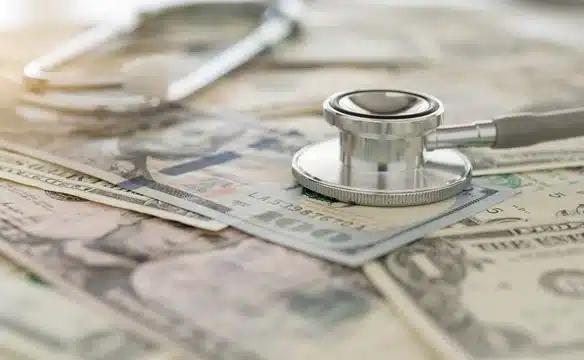The application of telecommunications and computers for the storage, transmission, and retrieval of data is known as information technology (IT). One of the uses of the same tech is for storage, recovery, and manipulation data from the medical science field. It is referred to as Health Information Technology (HIT).
Although HIT is not a new concept, in the last decade, countless interconnected tools, including computers, existing medical databases, and data from NGS analysis software, have evolved to enhance every healthcare database.
As a result, the pace of development of new tech, and the improvement of existing healthcare tools is incredible. It is hard not to agree with the fact that HIT is the driving force behind the rapid rate of innovation in medical sciences.
What is the role of IT in healthcare?
Health informatics has become a distinct field of studies and research. Along with collating data from treatments, clinical trials, and epidemiological surveys across the globe HIT increases the accessibility of treatments for the common folk. It opens up new windows of opportunity for patients who are in need of more information regarding particular ailments or new treatment options for chronic diseases.
Here are some of the most prominent changes brought on by the improvement of health information technology –
Classification and understanding of diseases
WHO has successfully classified thousands of diseases and their specific causes now stored in a massive public database that has over 14,000 codes. Healthcare professionals and medical researchers can access valuable data necessary to treat and control diseases from any part of the world.
The database consists of information on very common to extremely rare infections, hereditary conditions, congenital diseases, and genetic abnormalities. From cancers to bacterial infections of the sink, every illness and relevant details find space on the WHO database.
Most of the information regarding different types of cancers and genetic diseases, their prognosis and treatment come from next-generation sequencing methods (whole genome sequencing and whole exome sequencing).
The advent of NGS Analysis Software has helped in enriching this database of diseases, as well as hundreds of other public databases that store crucial health-related information.
Apart from providing ease of access to the latest developments in the treatment of chronic or rare diseases, these databases also enhance the transparency in the healthcare system.
Accessibility to better care and treatment quality
Patient care has always been of paramount importance to the medical community. The presence of an integrated healthcare information system has made patient care reliable, safe, and up-to-date in even remote corners of the world.
The applications of modern medicine and available treatment to lesser-known diseases has become possible thanks to the presence of improved efficiency of the information technology tools.
Medical professionals are contributing to the extensive repertoire of data by using computers and big data storage systems to store and share patient information. It has transformed the quality of care a patient can receive even in the emergency room.
The extensive data collection from patients by doctors and nurses in real-time ensures that there is plenty of current data available for scientific research, even in cases of moderately rare diseases.
The availability of state-of-the-art NGS analysis software allows the interpretation of immense volumes of genetic data. That enriches the existing databases on diseases, symptoms, causes, and treatment. The probability of finding recurring trends and treatment responses using the patient data is much higher with the constant accumulation of big data.
Faster turnabout on medical tests
Earlier medical test results could take between a few days and a couple of weeks (depending on the nature of the tests) to reach the doctor’s offices. Right now, the improved connectivity and better technology it is entirely possible for the doctor’s offices to receive the results as soon as the labs finish the tests or uploading the results on their shared database.
Patients can receive their results on their smartphones, and doctors can share the reports via email or encrypted chats. Other departments and specialists can receive medical test reports within a few seconds.
Technology enables medical professionals to share and transcribe these reports. Moreover, doctors can upload the information on specialized websites, including those for infectious diseases, hereditary or genetic conditions, and extremely rare conditions.
Faster turnabouts mean even complicated tests like genotyping cancer or rare hereditary ailments via NGS analysis software has become faster than ever. Sharing the report with the immediate patient can inspire confidence as he or she is able to gauge the complete picture of their treatment and prognosis. Click here to find out more about advancements in this field and how they contribute to HIT.
Prediction of outbreaks and epidemics
Several people go online when they begin to feel the first pangs of the flu. The larger system collects information from healthcare sites and medical research sites to determine the geographic region of the outbreak.
The development of NGS analysis software and its applications enable the medical professionals and researchers to detect the pathogens (viruses) responsible for flu-like infections.
Each year, search engines and medical databases contribute significantly to triangulate the area of an outbreak of the viral disease. That supports accurate detection of the pathogen responsible for the infection, and it helps in the determination of the proper course of treatment.
Health information technology (HIT) has been instrumental in the understanding of chronic and acute diseases. The increased availability of health information has improved the prognosis of several patients and enhanced their accessibility to the latest available treatments for their condition. Improvements in the IT sector have put patient care, diagnostics, and reporting on the fast-track. As far as healthcare is concerned, information technology can only lead it to further excellence in the future.
Related readings:
- 7 Reasons A Medical Practice Can’t Do Without A Healthcare Call Center
- Medical Malpractice: A Look into the Ethics of Misdiagnosis


